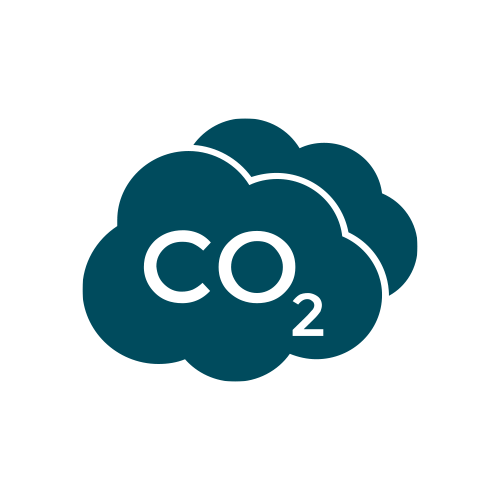
OCEAN CLIMATE ACTION PRIORITIES
There are eleven key areas where U.S. leaders can work together to successfully implement a full suite of ocean climate solutions:
AdvancE Offshore Wind
End Offshore Drilling
ExpeditE Green Shipping
ReducE Plastic Pollution
STOP IUU Fishing
Protect Blue Carbon Ecosystems
Support Climate Ready Fisheries
AdvancE Marine Protected Areas
EnhancE Coastal Resilience
Minimize Ocean Acidification
EvaluatE Ocean-Based CO2 Removal
AdvancE Offshore Wind
Offshore wind is creating thousands of good-paying jobs and millions of dollars of local economic investments, while simultaneously building a resilient energy grid that will prevent blackouts and meet growing energy demand, reducing pollution that leads to cancer and asthma, and making America more energy independent. Along with states, Native American Tribes, and Native Hawaiian Organizations, U.S. leaders should advance offshore wind expeditiously in a way that avoids and minimizes impacts on our struggling marine and coastal wildlife and habitats.
END OFfSHORE DRILLING AND ACCELERATE THE TRANSITION TO A JUST ECONOMY
Calls to increase domestic oil and gas production are squarely inconsistent with serious efforts to address the climate crisis. New offshore lease sales will lock in production potential for decades, resulting in hundreds of millions of metric tons of harmful emissions that are driving climate change. Offshore drilling has burdened environmental justice communities with oil spills and health impacts from refineries and other associated industries.
U.S. leaders must invest in a just transition to renewable energy that centers the views of local communities and addresses the long history of environmental injustice surrounding fossil fuel production.
EXPEDITE GREEN SHIPPING AND DECARBONIZE PORTS
Shipping is one of the most harmful industries to the ocean with emissions projected to grow exponentially by 2050 – up to 130% higher than 2008 emission levels. Ports are hotspots of local emissions and air pollutants, with frontline workers and nearby communities–often historically marginalized and environmental justice communities–suffering disproportionate harm. Marine vessels, meanwhile, are responsible for driving growing levels of ocean noise pollution, which diminishes the health and resilience of marine life.
Achieving clean and quiet shipping and addressing port emissions and pollution will require close collaboration across local, state, federal, and international parties in order to transition the entire maritime industry as soon as possible.
REDUCE PLASTIC POLLUTION AND EMISSIONS
Plastic production is a growing source of greenhouse gas and toxic emissions that is poisoning communities, contributing to the climate crisis, choking our ocean, and harming marine life. The durability of plastics and their persistence in the environment is especially challenging for environmental justice and ocean pollution. Like many other fossil fuel related industries, impacts from extraction to disposal disproportionately harm the health of historically marginalized and environmental justice communities.
U.S. leaders must establish a comprehensive strategy to reduce the harm of plastic waste to the environment, the ocean, and human health.
STOP ILLEGAL, UNREPORTED, and UNREGULATED (IUU) FISHING
Representing up to one third of global catch, illegal, unreported, and unregulated (IUU) fishing is one of the greatest global environmental threats to ocean health. IUU fishing directly contributes to overfishing, threatening the sustainability of fisheries and marine environments; undermines coastal communities and food security; destabilizes the security of maritime states, economically disadvantaged fishermen operating legally; and drives human trafficking and labor and other human rights abuses in the fishing industry. Left unchecked, IUU fishing will significantly exacerbate the impacts of climate change on communities and the health of the ocean.
As a top importer of seafood, the U.S. could have a critical role in helping to shift global practices by managing an effective seafood traceability program and implementing a whole-of-government approach to address IUU and labor issues.
SUPPORT CLIMATE READY FISHERIES
Climate change is altering marine environments and threatening the communities that depend on healthy and abundant fisheries. Fish stocks are shifting northward, and fisheries that communities rely on are moving from traditional grounds. These changes are testing existing management practices as they affect fisheries in our ocean waters, fishery-dependent coastal economies, and Indigenous communities and cultures that are particularly vulnerable as the effects of climate change worsen.
U.S. leaders should advance climate ready fisheries provisions and establish clear goals and guidance to improve fisheries management and the resilience of fish stocks in a changing climate.
ADVANCE MARINE PROTECTED AREAS
Marine protected areas (MPAs)–areas of the ocean with the primary purpose of protecting biodiversity and nature for the long term–offer a nature-based solution for enhancing climate resilience. Scientists have found that placing at least 30% of the world’s ocean in fully or highly protected Marine Protected Areas is necessary to stem the extinction of ocean wildlife, stabilize our climate, and safeguard our future.
Generating $8 billion annually in local economies and supporting numerous jobs and businesses, MPAs protect blue carbon environments and allow for continued carbon sequestration and ecosystem resilience. They also prevent damaging and destructive activities, promote robust populations, and provide refuge to fish and wildlife in a changing ocean.
ENHANCE COASTAL RESILIENCE
The U.S. is expected to experience as much sea level rise by the year 2050 as it witnessed in the previous hundred years as well as “moderate” (typically damaging) flooding that occurs on average more than 10 times as often as it does today. These impacts will cause tide and storm surge heights to increase and reach further inland, further exacerbating racial and social inequality. Failing to curb future emissions could cause an additional 1.5 - 5 feet of rise. Coastal flooding will become an increasingly severe environmental justice issue as sea levels rise.
Federal agencies must take the steps needed to reduce risks associated with rising sea levels and coastal storm flooding, including mapping areas at risk of sea level rise, strengthening the National Flood Insurance Program (NFIP), and developing national plans to relocate critical infrastructure to higher ground.
MINIMIZE OCEAN ACIDIFICATION
Ocean acidification is a direct result of human-caused carbon emissions and is altering the chemical balance of seawater that marine life needs to survive. Combined with other climate impacts such as ocean warming and deoxygenation, increasing ocean acidification threatens marine species and ecosystems - including those that sustain jobs and support coastal economies across the United States.
Moving forward, there should be regional risk assessments that identify the impacts of ocean acidification to ocean and coastal conditions as well as its impacts on the marine species and ecosystems that communities rely on. It is also critical that federal, state, Tribal and local government partners continue to advance collaborations that inform clear governance and management strategies.
PROTECT BLUE CARBON SYSTEMS
“Blue carbon” ecosystems – such as mangroves, salt marshes, sea grasses, coral reefs, and kelp forests – absorb carbon dioxide out of the atmosphere and store it at a rate of up to four times that of forests on land. These ecosystems can protect coastal communities from the impacts of sea level rise, flooding, and storms while providing habitat for marine wildlife and fisheries that power economies.
Decision makers must limit the degradation of these areas, maximize their blue carbon benefits, and prioritize the protection of vulnerable communities, including communities of color and lower income communities who are facing climate impacts first and worst.
Evaluating Ocean-Based Carbon Dioxide Removal
Net negative emissions will be necessary even with aggressive emissions reductions to stabilize warming at 1.5 degrees Celsius by the end of the century. The ocean already takes up and sequesters nearly a third of human-caused carbon emissions, which raises the question whether it is possible to enhance this function without further harming the ocean.
To determine if ocean-based carbon dioxide removal at a scale sufficient to have a meaningful beneficial impact (i.e. over 1 gigaton annually) is feasible and ethical, U.S. leaders must facilitate both research and governance structures for this emerging technology and ensure ocean-based carbon dioxide removal is not overlooked or under-studied as opportunities emerge in this area.










